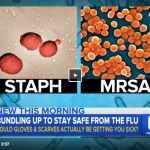Vitamin D — What You Need to Know
 I often test my patients’ vitamin D levels. Symptoms that prompt me to order it are fatigue, muscle aches and weakness, bone pain, and mood changes. While these complaints are non-specific, a simple blood test is easy enough to order, and if vitamin D deficiency is a contributor, it is easily corrected.
I often test my patients’ vitamin D levels. Symptoms that prompt me to order it are fatigue, muscle aches and weakness, bone pain, and mood changes. While these complaints are non-specific, a simple blood test is easy enough to order, and if vitamin D deficiency is a contributor, it is easily corrected.
We get vitamin D from food and the sunlight. Foods that contain vitamin D are mostly animal products, e.g. fish, cheese, egg yolks, and beef liver, pork and enriched dairy foods like yogurt and milk. While some vegetables contain vitamin D, if you are maintain a vegan diet, consider supplementation. Sunlight reacts with the cholesterol in our skin to produce vitamin D our bodies can use.
If you aren’t exposed to sunlight consistently or if you are religious about sunscreen, you may not be getting enough vitamin D. Other risk factors for vitamin D deficiency include dark skin, obesity, kidney problems, and GI disorders like Crohn’s disease, celiac disease and cystic fibrosis, that prevent you from absorbing vitamin D.
Vitamin D deficiency puts you at risk for osteoporosis and may also put you at risk for cardiovascular disease, cancer, asthma in children and cognitive impairment in older adults.
— For healthy adults, taking in about 800IU of vitamin D a day should be enough to maintain normal levels, and avoid side effects.
— About 15 – 30 minutes of sun exposure on the face, arms and hands without sunscreen between the hours of 10am and 4pm several times a week is likely enough. Pale skin will make vitamin d faster than darker skin. The more skin exposed, the faster your skin can make vitamin D.
— You cannot get vitamin D from sunlight through a window. You need UVB rays which do not penetrate the glass.
— You cannot get vitamin D through clothes or through sunscreen, though for completeness sake, I have to mention (in case you live under a rock) too much sun exposure puts you at risk for skin cancer and visible skin changes associated with early aging.
The pandemic has created two kinds of people when it comes to the great outdoors, those who are hunkering down and those who are using any excuse to get outside no matter the temperature. If you are in the first group, pick up some vitamin D and take 600-800IU a day. It can’t hurt. If you are in the second group, for max benefit from sunlight, expose some skin for part of the time. Though more data is certainly needed to make any definitive claims, there is some early research suggesting decreased risk of Covid infection and if infected, Covid complications, in people with adequate stores of vitamin D.
Why Do Smokers Get the Vaccine First?
Cocktails That Make You Feel Like Celebrating

10 Reasons You Should Have Sex Tonight
























